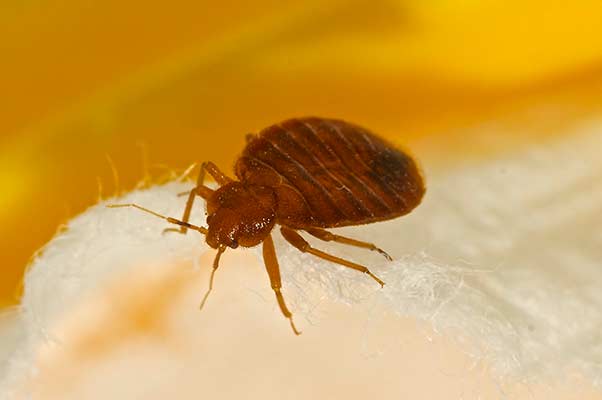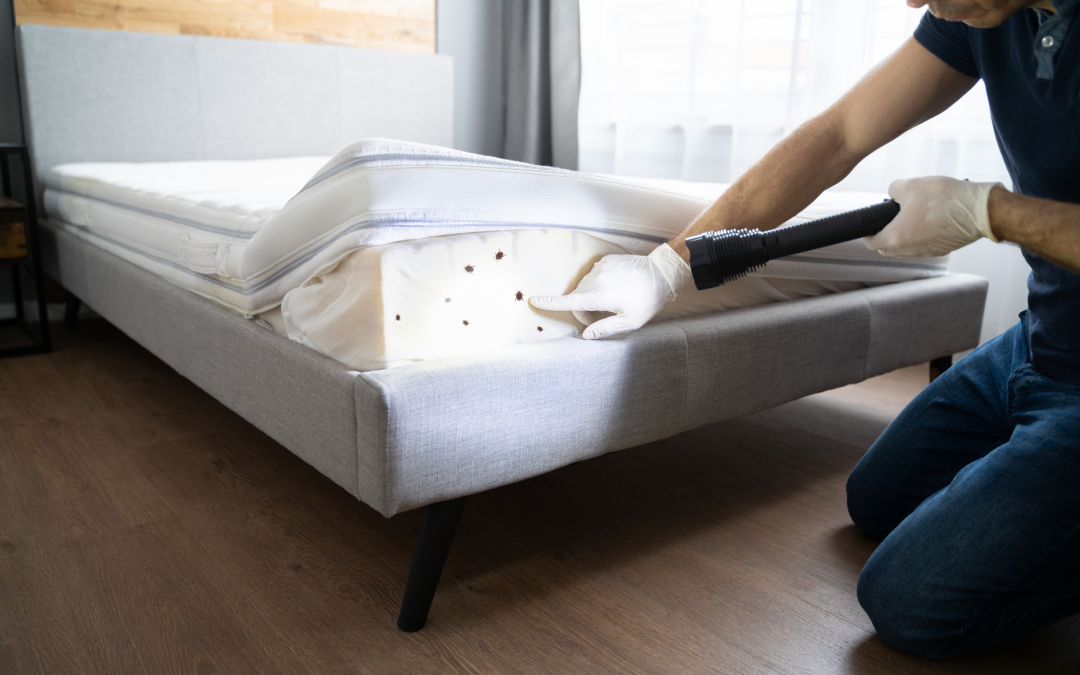How to Check A Hotel Room for Bedbugs
Bed bugs, small insects with a knack for hiding and hitchhiking, have become a common nuisance in homes and hotels worldwide. These tiny, oval-shaped pests thrive in cracks and crevices, making it challenging to detect and eliminate them. Hotels, with their high human activity, provide an ideal habitat for these pests to thrive and spread. Knowing how to check a hotel room for bedbugs is something you need to know!
Whether you’re curious about bed bug identification or seeking practical advice, this article will provide you with the knowledge you need to protect yourself and your living spaces. So let’s dive in and uncover the secrets of these bothersome critters and learn how to keep them at bay.
Appearance of Bed Bugs
To identify bed bugs, it is important to be familiar with their appearance and preferred hiding spots. Bed bugs are small insects that vary in size, ranging from the size of a poppy seed to that of an apple seed, depending on their growth stage.
When fully grown, bed bugs have an oval shape and a flat body that measures approximately 5 mm in length, or 1/4 inch. Their color ranges from yellowish brown to reddish brown, depending on how recently they have fed. They can move quickly when disturbed, such as by movement or light. This allows them to hide easily in furniture crevices during the day and emerge at night. Unless there is enough light shining directly on them, these pests will leave no signs of their presence.
Unlike most insects, bed bugs have six legs, granting them enhanced mobility within your home without arousing suspicion from humans or other animals. While mattresses and box springs are common habitats for bed bugs, they can also be found lurking behind wallpaper seams or baseboards near carpeted areas that experience frequent foot traffic, particularly if there has been recent construction work in the vicinity.

How to Check A Hotel Room for Bedbugs
Behavior and Habits of Bed Bugs
These pests feed on human blood and can survive for a year without a meal. They are active at night and can leave itchy, red marks on the skin. One can identify bed bugs by looking for black or brown spots on the bed frame, mattress, and furniture, which are the droppings left by these pests. Additionally, one can spot small white eggs along the mattress seams.
Additional indications that there may be a presence of bed bugs include a stale scent lingering in the area, traces of blood on your bedding, and tiny crimson welts on your epidermis.
Bed Bugs and Travel
Individuals who travel frequently are at a higher risk of coming into contact with bed bugs compared to the general public. Female bed bugs are capable of laying up to five eggs daily, and a total of 200-500 throughout their lifetime. Given a suitable food source and room temperature, they can survive for over 300 days. Although it is plausible for bed bugs to carry diseases, none have been linked to them thus far. Since bed bugs feed on blood, reactions to their bites can vary among humans and animals.
Regrettably, when staying at hotels, one may encounter an unwelcome visitor: the bed bug. These minuscule parasites thrive in areas with high human activity, making hotels an ideal location for them to thrive. Many guests are unaware that they may wake up with itchy bites or unintentionally bring these pests back home with them.
The hotel industry endeavors to prevent bed bug infestations, as they can disrupt comfort and business operations. Despite their best efforts, however, eradicating these bugs is only sometimes successful, as they are adept at concealing themselves and hitching rides on unsuspecting travelers’ luggage and personal belongings. It is crucial for travelers to be aware of the signs to minimize potential health consequences and limit their spread.
Bed bugs are well-known for their ability to hitchhike, easily attaching themselves to items like suitcases, purses, and clothing. This makes hotels a prime location for these pests, increasing the likelihood of you unknowingly bringing them home with you after your trip.
The process is simple: bed bugs sneak into your luggage or cling onto personal items left on hotel furniture or bedding. These sneaky travelers will remain hidden in crevices until they find a new home – which could be yours! Therefore, it’s crucial to thoroughly inspect all belongings when returning home to prevent these unwelcome guests from invading.
How to Avoid Bed Bugs During Travel
Thoroughly inspect the mattress and box spring for any signs of these pests, such as dark spots, discarded skins, or even live bugs. Additionally, it is crucial to inspect the headboard and nearby furniture for any indications of infestation, such as small blood stains on the sheets or peculiar musty smells. By taking a proactive approach and thoroughly inspecting the room, you can prevent the unpleasant experience of bringing these unwanted hitchhikers back home with you after your stay.
In Phoenix, AZ, identifying bed bugs through a visual inspection can be difficult. However, there is an option to confirm their presence or absence. Bills Pest Termite Control offers a unique service for $75, which includes sending a skilled bed bug inspector to examine any room where an infestation is suspected. The results are shared with the customer within 10-15 minutes. Schedule an appointment with Bills Pest Termite Control for all of your pesky critters today
Let us help you learn How to Check A Hotel Room for Bedbug
Similar Post Content:
- Arizona Pest Control
- Are Termites Common?
- 7 Signs of Termites
- Pest Control Worth it?
- Check for Termites
- Treat for Bugs
- 8 Common Bugs
- Cost for Pest Control
- Check Hotel for Bugs
- Rodents in Arizona
- Get Rid of Roaches
- Arizona Bark Scorpions
- Pet-Friendly Pest Control
- Professional Scorpion Control
- Mud Strings?
- Best Arizona Exterminators
- Exterminator Termites


